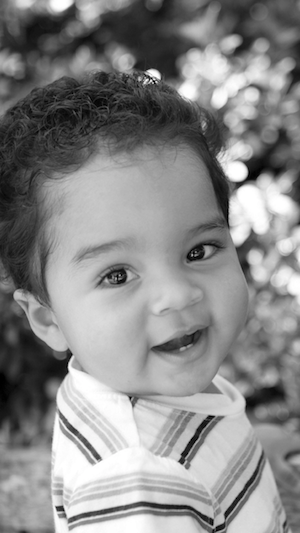
Tantrums, Tears, and Tempers: Behavior Is Communication
What’s Really Going on When a Child Throws a Tantrum at a Store or Cries Incessantly Before Bedtime?
Print Version
Most likely, the child is trying to express something that he or she can’t say in words. In the first case, it might mean the child wants a candy bar or toy. In the second, it might mean the child is afraid of the dark.
For young children, behavior is communication that’s used to meet needs. It’s how they let you know they either want something or want to avoid something.
The reason they sometimes use such challenging behaviors is because it works. By understanding what your child is trying to express, you can better respond to his or her needs and help your child learn more positive ways to communicate. Here are some questions you can consider asking about your child’s challenging behaviors and some steps you can take to help decrease the likelihood of that behavior from happening again.
What is the Purpose of the Behavior?
To determine the purpose of your child’s behavior, start by looking at what is happening before and after it begins. Consider changes in routines, times of the day it happens, and social situations that seem to trigger it. If you can identify the purpose of your child’s behavior, you can come up with other strategies to address his or her needs to encourage positive behaviors.
Try to keep your focus on what your child is communicating and avoid labeling the behavior or your child as “bad.” When you do, you’ll be able to better put the behavior in perspective and focus on strategies to help your child acquire needed skills.
What Factors Affect Behavior?
Your child’s developmental stage, temperament, and disability-related needs all affect his or her behavior. Here’s how.
Children have development stages
Child development guidelines suggest the ages at which children typically develop various physical, reasoning, social, and emotional skills. Being familiar with these guidelines can help you pinpoint major areas where your child might be lagging. Developmental delays can affect your child’s ability to communicate with you.
Temperament
Temperament describes the way a child tends to react to people, places, and experiences. Children who are easygoing usually are quick to adapt to new situations and are comfortable with new experiences. Children who are intense tend to react dramatically, take longer to adapt, and can be easily frustrated. Children who are fearful are cautious, slower to adapt, and may take longer to be comfortable with new experiences. For example, if your child is intense, moving immediately from one activity to another might trigger an outburst. Careful planning on how to transition your child slowly from one activity to another will be key to fostering positive behavior.
Disability
Your child’s disability also may affect his or her behavior. A child with sensory disorders, for example, may not be able to handle noisy spaces with many people. A child with autism might find making eye contact and being around other children stressful. As a result, such children may communicate their feelings through tantrums.
How Should a Parent Encourage Positive Behaviors?

Knowing that behavior has a purpose and is affected by other factors, you can help your child build the necessary skills to communicate more effectively. Here are some strategies to try.
Reinforce Good Behavior
Be sure to praise your child for appropriate behavior. “Catch” them doing the right things.
Provide Structure and Consistency
Young children need consistent schedules and ground rules. Such stability helps provide a safe and predictable environment for them to learn appropriate behaviors over time.
Collect Data
Keep a log that documents challenging behaviors. Note when the behavior occurs, what the child is doing before and after it happens, and what is going on in the child’s environment when the behavior takes place. If you see a consistent pattern, then you can devise strategies to address that behavior.
Name the Behavior You’re Encouraging
By naming the appropriate behavior for your child, you are helping him or her reinforce it. For example, you might say, “Sharing your toys with Sally is a nice thing to do.”
Give Words for Emotions
Help your child identify emotions and needs in certain situations by teaching simple phrases such as “I don’t like that!” or “Help me!” Also give your child the language to explain feelings and bring a conclusion to them. For example, you might teach him or her to say, “I’m all done being mad.”
Change the Environment
If you can change the environment so a behavior is reduced or eliminated, it will help your child.
Give Choices
Give your child a sense of control by offering basic choices. To keep things simple, it’s best to give only two options, such as, “Do you want to wear your blue shirt or yellow shirt?”
Avoid Power Struggles
Try to compromise with your child. For example, you might say, “I’ll pick up one toy and you pick up one toy.”
Summary
Behavior is how a child tells you something he or she cannot tell you in words. It is affected by the child’s developmental stage, temperament, and type of disability. To understand behavior, it is helpful if you are aware, insightful, and use effective skills in managing the behavior. You can use the strategies recommended above to build on your own knowledge about your child.
